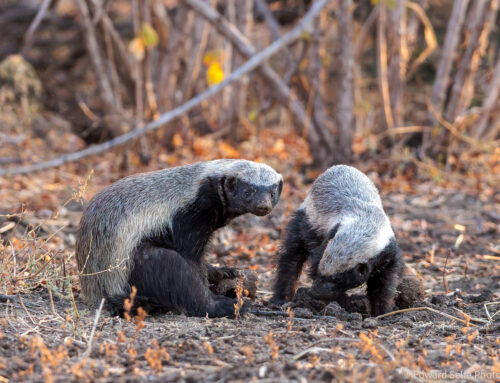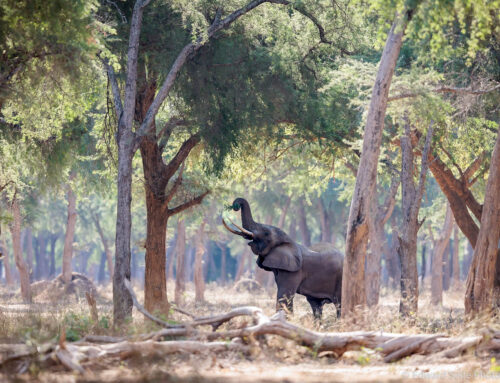Liz & Paul had booked this trip way back in May 2019. It was great to meet them finally after all the delays of the last 2 years. Their remit was clear – simply to enjoy spending time in the bush and to get some great photos along the way. In many ways, this is the best approach of all; by taking time to appreciate all aspects of nature, we slow down and notice the small signs that lead us to the big headline sightings.
And we certainly enjoyed the headliners this week. Much of our time was spent with one of two leopard families which can be found in the area. Kuita, a female leopard near Kaingo Camp, has 2 cubs which are about a year old, and Chiphadzuwa, a leopard who lives north of Kaingo, nearer Mwamba Camp, has two 7-month-old cubs. During the week, our safaris revolved around sightings of these two families; when there was activity, we stayed with them, and when they were sleeping, we moved on to other subjects.
The northern part of the South Luangwa is characterised by varied and beautiful habitats which follow the meandering course of the river. This scenery provides a welcome range of backdrops against which to photograph subjects; in fact, when deciding which areas to explore, we chose based on their visual appeal. Throughout the week, we had unusual cloudy weather which meant that we had to go looking for appealing subjects and for activity and action, since it’s hard to make high-impact images of animals in their environments when the light is flat.
Below is a visual report of our time in the area around Shenton Safaris’ camps. This area is shared with Lion Camp but no other camp, so it is private and exclusive, allowing us to manage sightings based on animal behaviour rather than based on the movements of other vehicles. We followed the story of Chiphadzuwa (Chips) and her cubs throughout the week, so I have put all those images at the start.
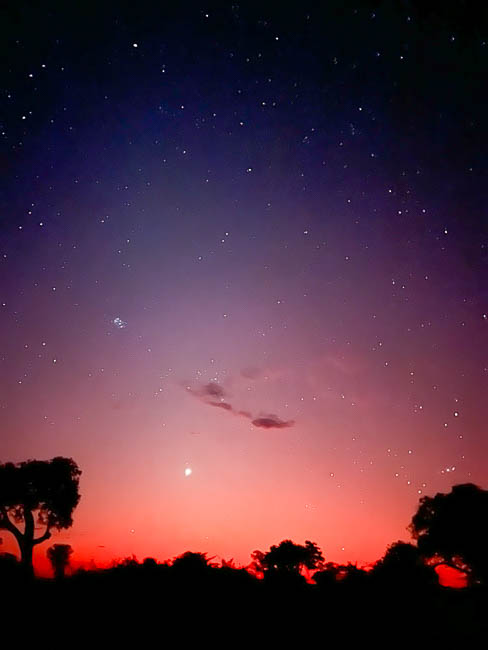
Pre-sunrise at Mwamba Bushcamp.
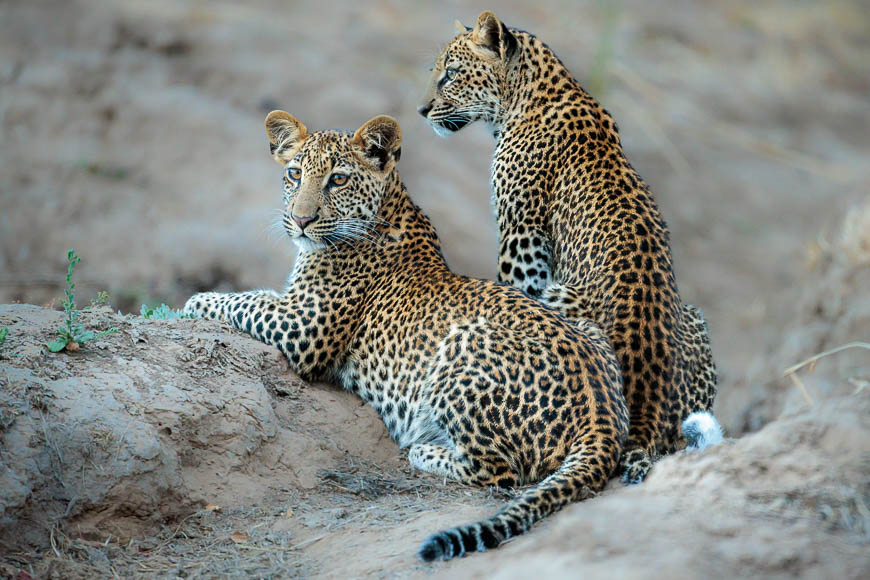
We first found Chips’ cubs late in the afternoon on Day 2. They were emerging from the thickets, heading towards the river, with full bellies. They had clearly been feeding on something that their mother had killed for them which was why we had not seen them before this point. Their mother was nearby but resting in an inaccessible area.
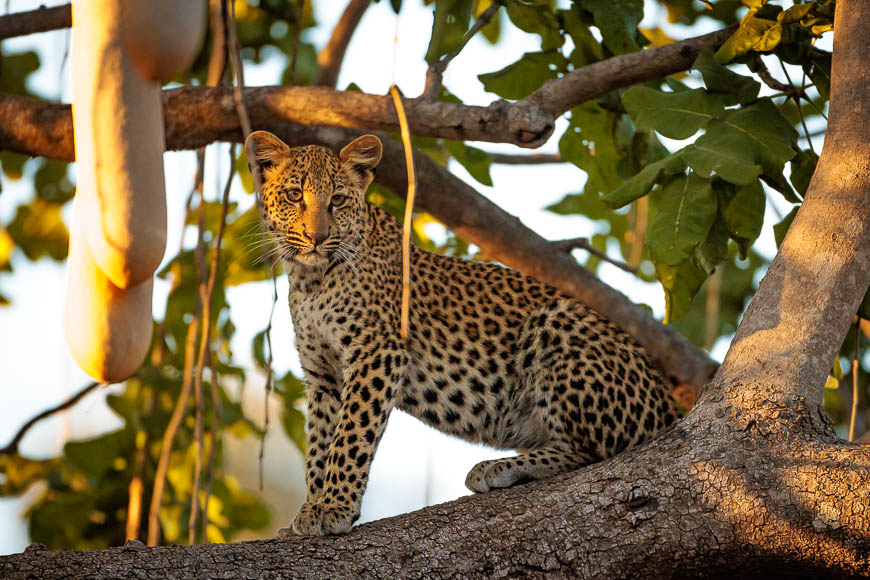
We stayed with them until the light had completely faded. But we returned early the following morning, hoping to find them in the same area. At this age, their mother would still leave them while she goes hunting, and then collect them to take them to the site of a new meal when she has been successful.
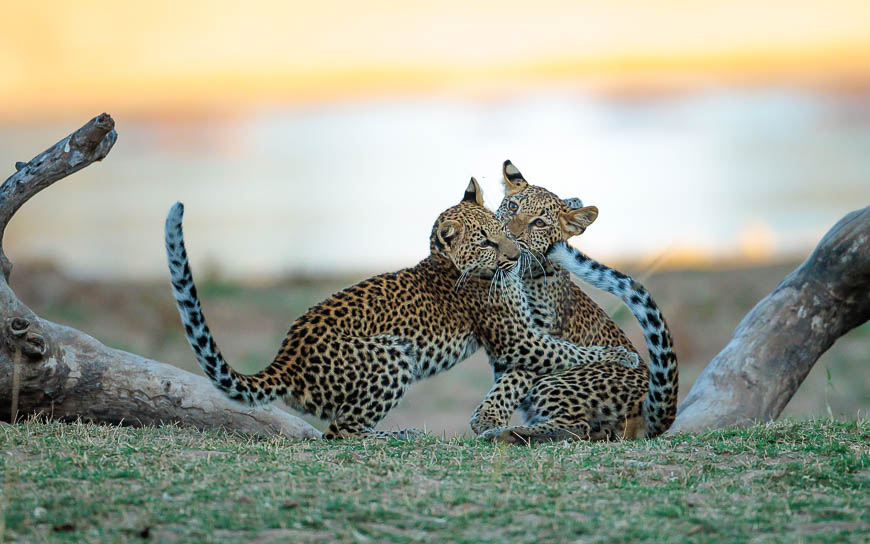
They were in a similar area to the previous evening, and they treated us to almost 3 hours of playing, climbing, chasing and ambushing each other!
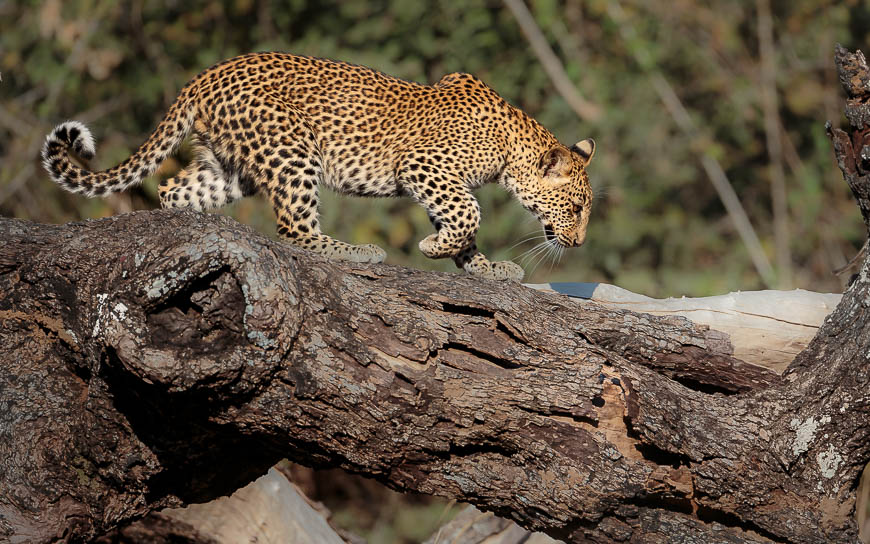
As the light got stronger, they started to slow down, exploring their surroundings and climbing up onto fallen trees. We positioned ourselves ready for the male cub to climb this log and were rewarded when he did so!
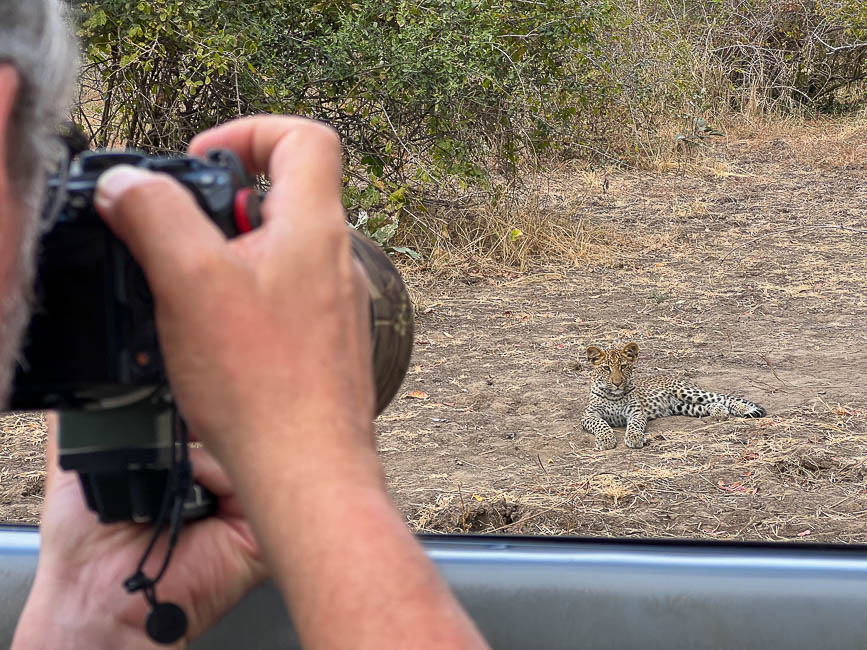
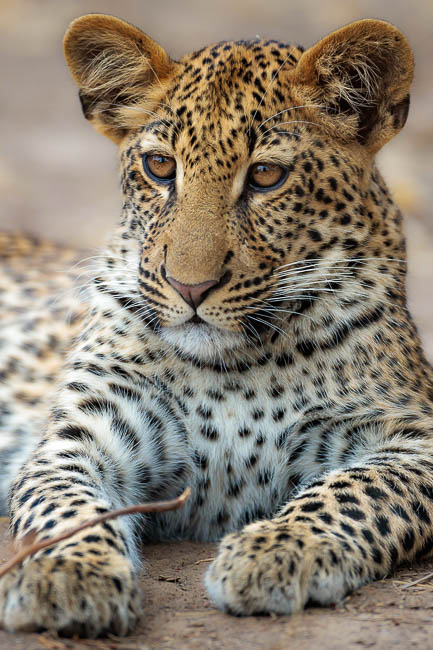
We returned that evening, and found the male cub resting close to where we had left him. The female was not visible but she is shyer than her brother and tends to take cover in more secluded areas.
We checked on them over the next couple of days and found the male each time, but the female was always absent. We knew (hoped!) that she must be nearby but there are lots of trees in that area which she could hide in, including many which have thick canopies.
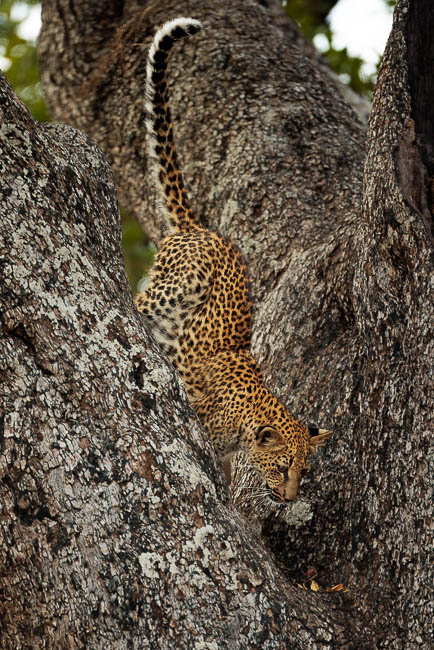
On the fourth afternoon, we found her again, high in an ebony tree, where she was just visible. She stayed up there until late afternoon and then climbed down.
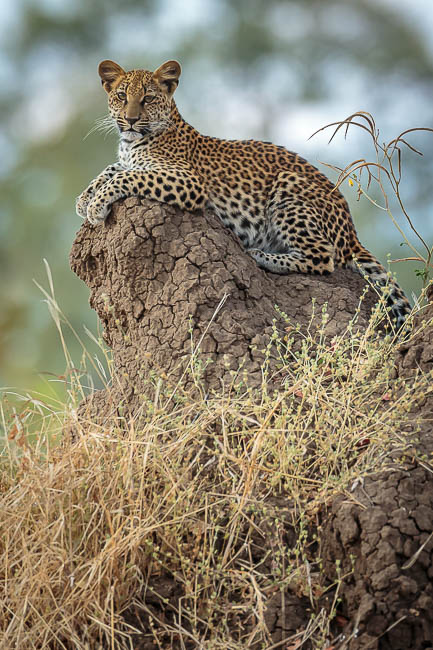
She climbed a termite mound under the same ebony tree and scouted around for a while before heading back towards the river to meet up with her brother.
When they met up, they greeted briefly – leopards are anti-social most of the time! – and then the male cub started to stalk a herd of elephants…! This predictably did not go very well for him!
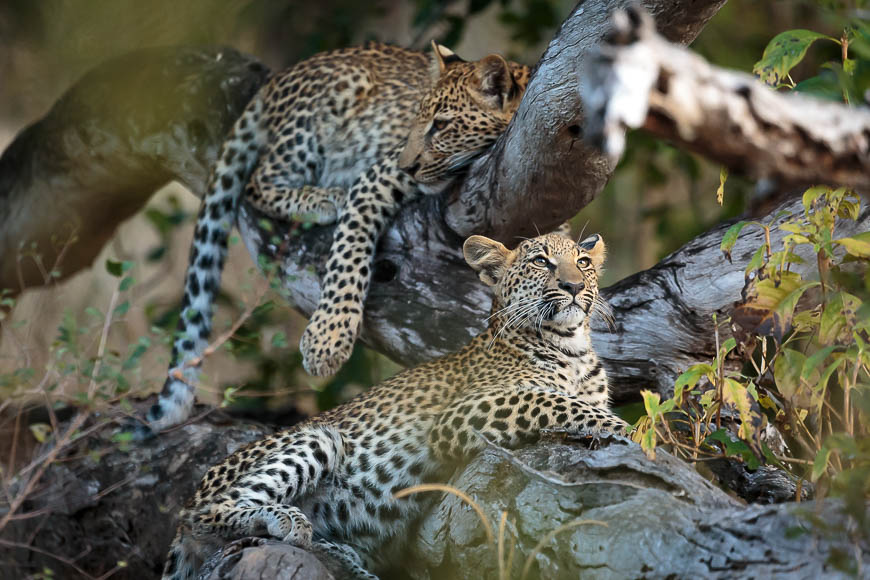
The following day, we couldn’t find the cubs. We determined that they had been collected by their mother and taken to the site of her latest successful hunt, but this had happened during the previous night. On out final morning, I decided to try to find them, so we started to look in Chips’ favourite hunting area, the island between Fish Eagle lagoon and the Luangwa River.
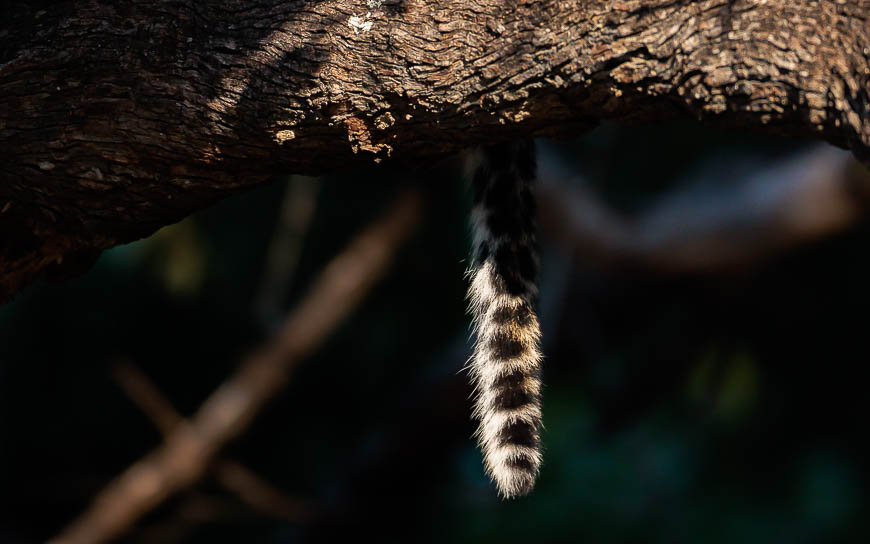
When we arrived in the area, there were hyaenas everywhere, suggesting that there was a carcass of some kind around. We used the hyaenas to point us to the site and soon found Chips and the two cubs resting on a dead tree.
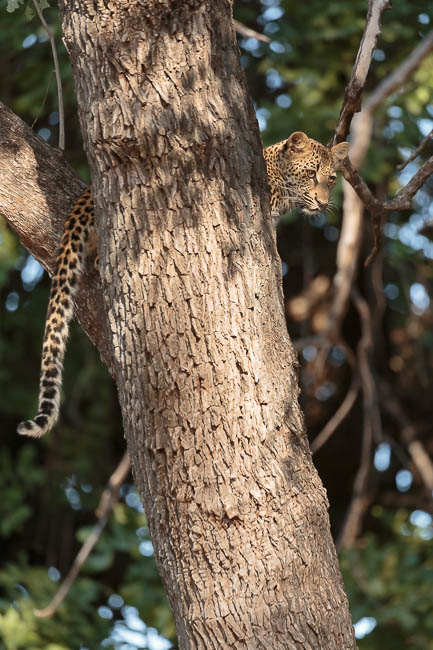
Over the next 3 hours, we spent time with them as they rested, interacted and avoided the hyaenas. After a while, the female cub climbed a tree and started to feed; this showed us the site where there mother had stashed the puku kill which she had made.
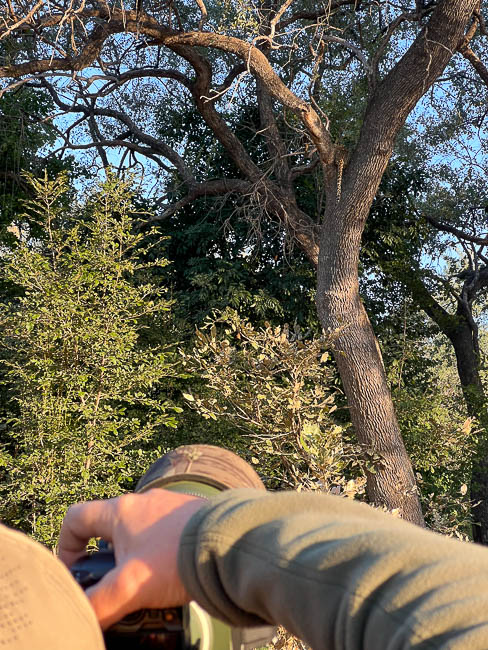
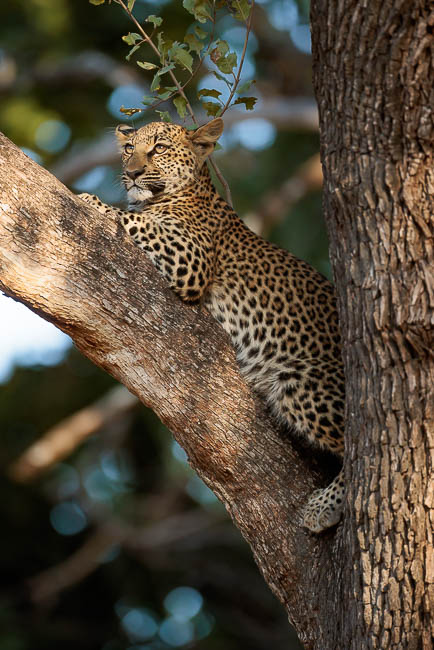
A 36 hour old antelope carcass is not the most attractive of sights, but the three of them looked well fed and we were happy to see the youngsters with full bellies again. They alternately climbed trees, made faces and hissing noises at the hyaenas and rested near their mother on the ground.
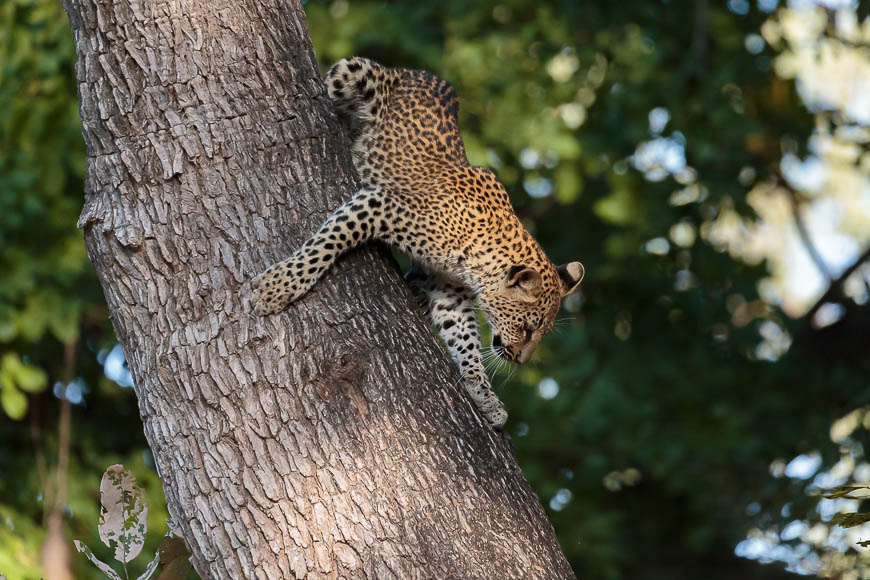
Some descents are more elegant than others…..
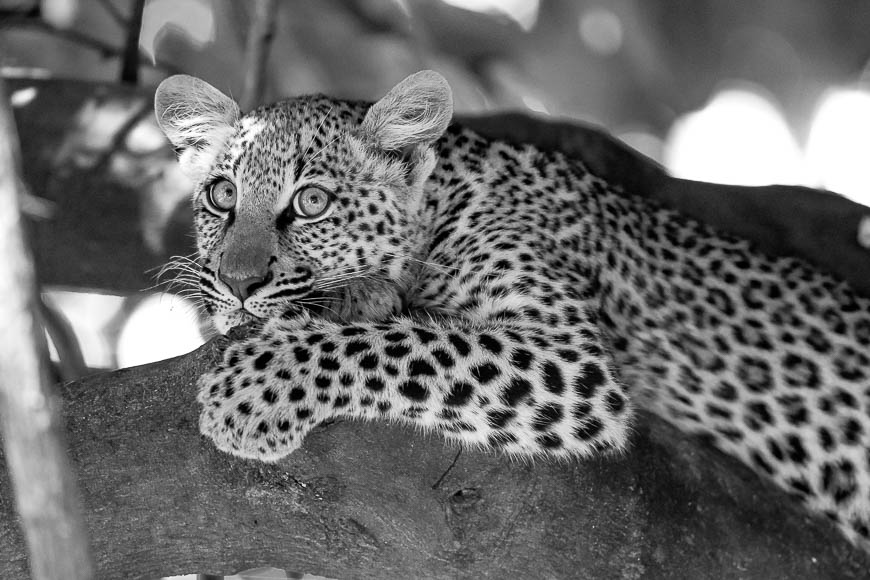
We left them late in the morning; the mother was resting on the ground with the male cub and the female cub was sleeping on the branch next to the carcass. Underneath 5 hyaenas waited for their chance to eat the scraps which dropped to the ground. At one point, the cub felt that she wanted to secure the carcass more tightly. In doing so, she dropped a large piece of skin and leg bones which the hyaenas quickly snatched!
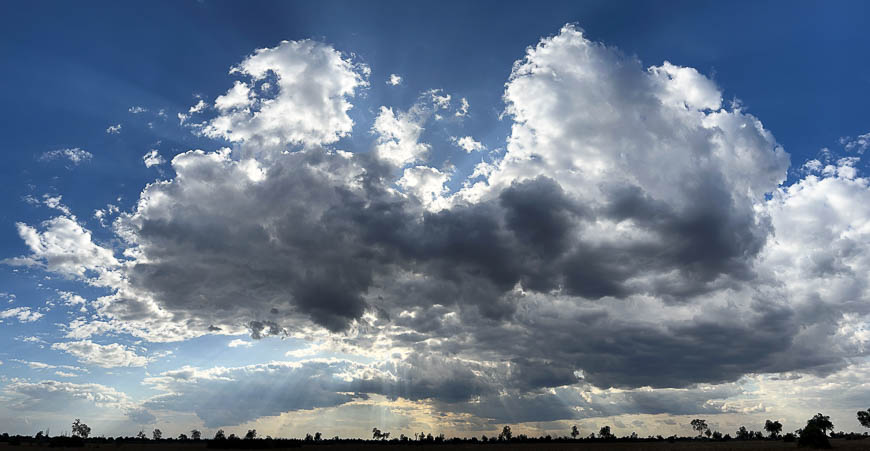
The cloudy weather did bring some very interesting skies; these small storm cells over Lion Plain were particularly memorable!
During the week, we were also fortunate to coincide with the mating period of lions from the MK pride. We followed large male lion tracks one morning and finally found the pair close to the river. It was the very early stages of the mating process, which is characterised by a lot of chasing, testing of the male, aggression by the female and endless pursuit. The female will invite mating (since her hormones are instructing her to do this) but then show considerable aggression towards the male when he approaches. The purpose of the arrangement is to ensure that the male is sufficiently fit and dominant to hold on to the female over the 4-day mating period, which gives an indication that he will be resident in the area long enough to protect the cubs when they arrive. The female’s ovulation is also delayed until mating has taken place for several days, thus enforcing this concept; only males who are able to hold on to a female for 4 days, and with the stamina to mate repeatedly over that time, will be able to father her cubs.
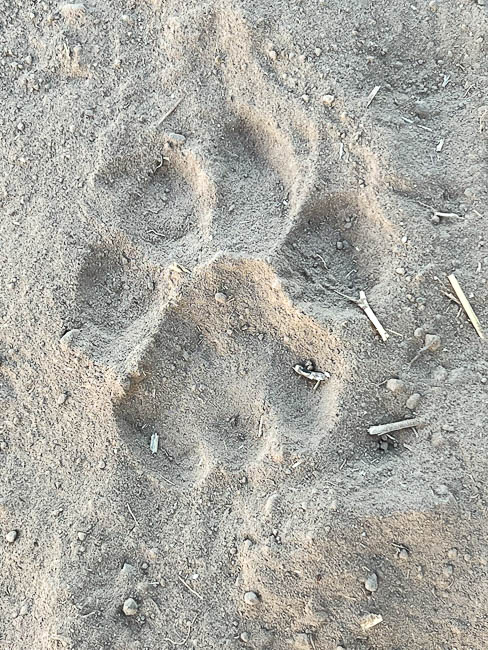
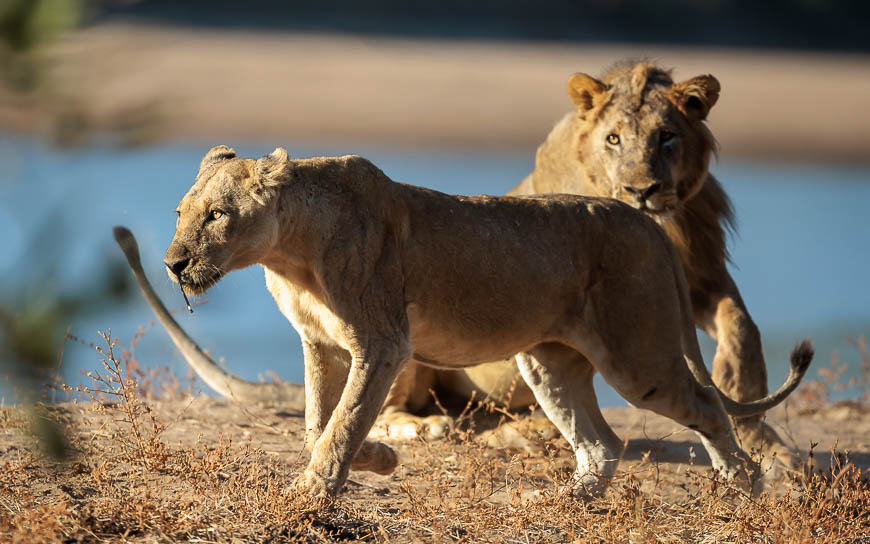
Our first encounter with them was on the river bank; she was alternately brushing past him, rubbing her head on his (a behaviour we call lordosis) and then running away, turning to snarl at him when he followed….
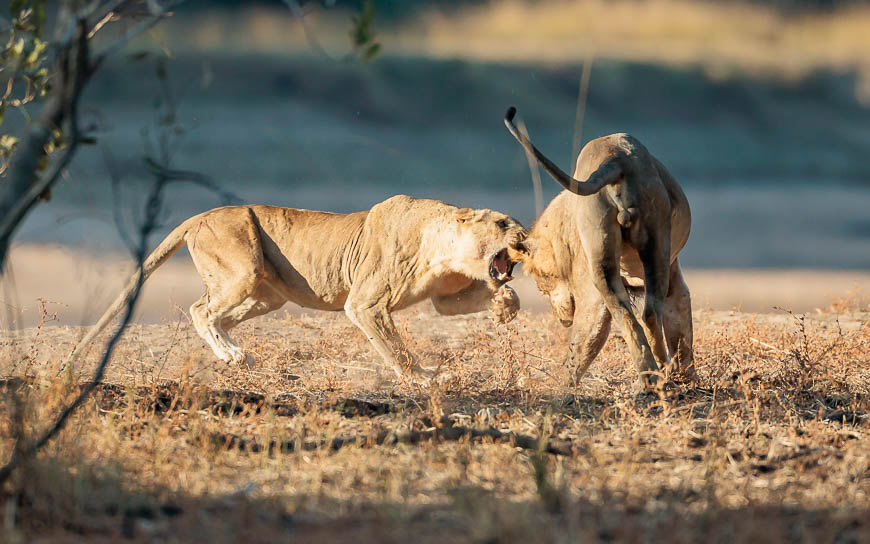
Eventually, after an hour, she relented and they mated, the first of several hundred couplings during that mating process. It was fascinating to be present at the very start of the mating rituals.
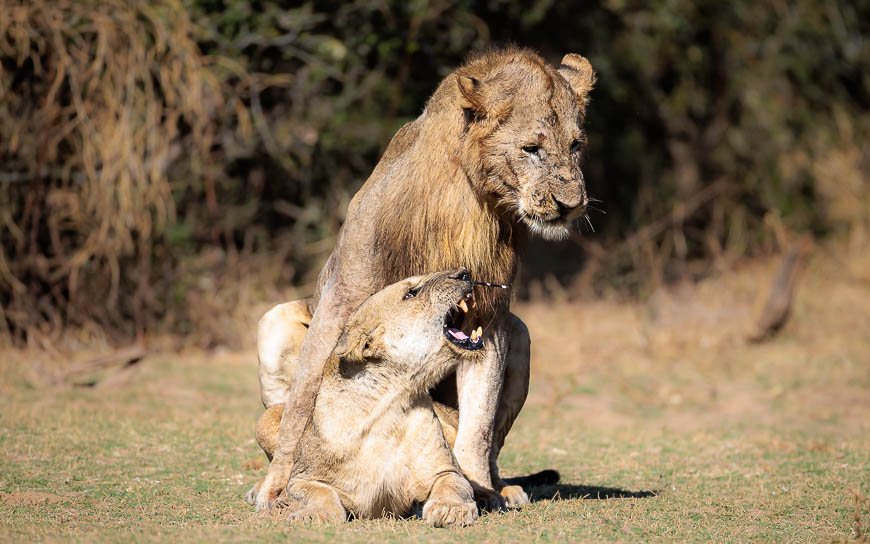
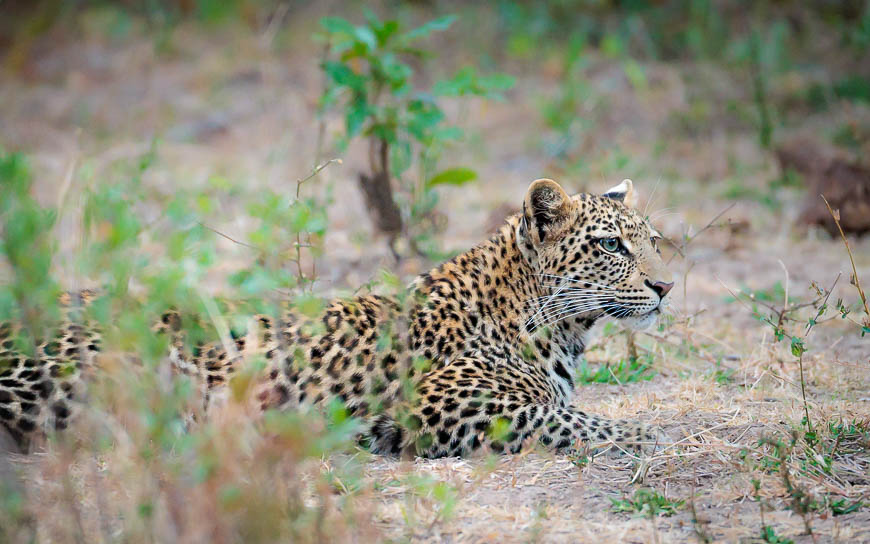
We also managed to catch up with one of Kuita’s cubs during our trip. She was on the ground initially…..
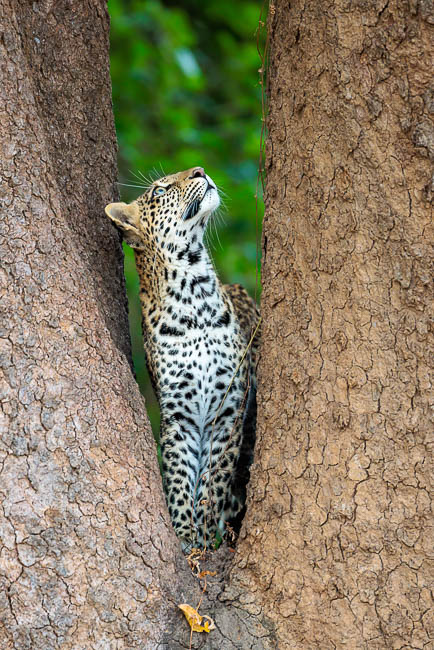
….but I saw her eyeing up a sausage tree with a suitable fork for her to climb into, so we pulled back and positioned for the shot….
The weather was cloudy for much of the week which sometimes made the light a bit flat. But we still had interesting and varied sightings throughout. Here are a sample of the rest. They are a mixture of unusual sightings, such as the civet, and our results from trying to make beautiful images from ordinary situations, the main goal of a photo safari.
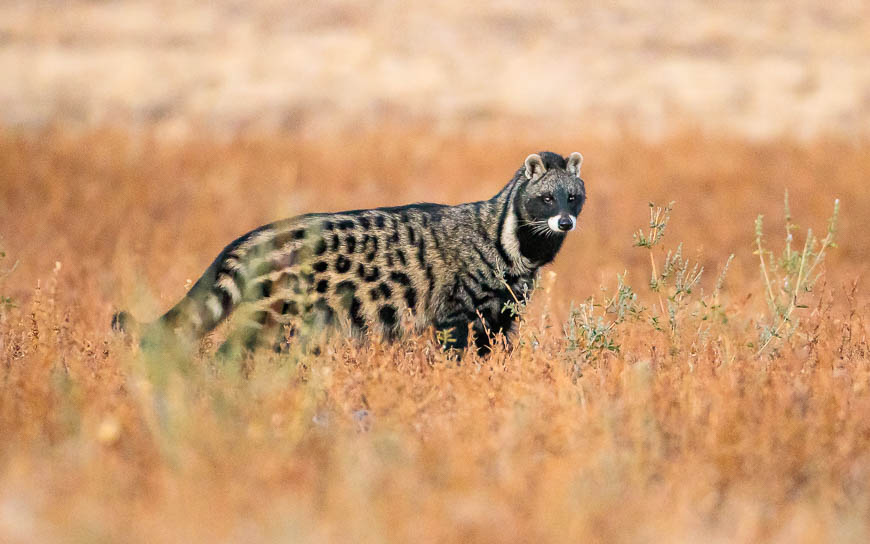
This civet was still foraging in the early morning light, allowing us the best sighting that I have ever had of this species in daylight.
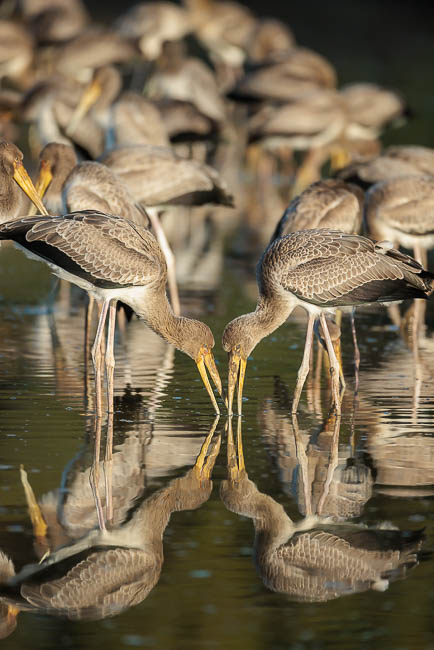
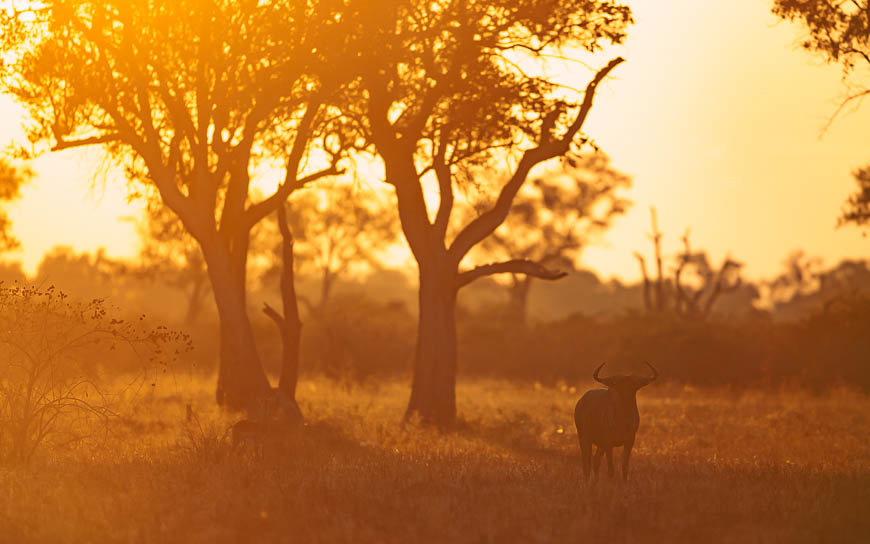
Cookson’s wildebeest, an endemic subspecies, at sunrise.
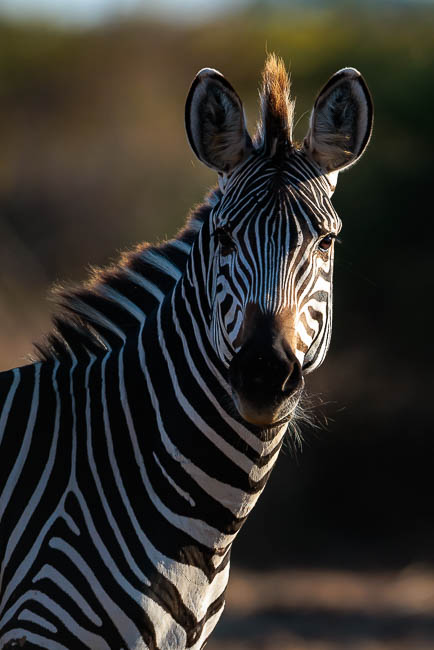
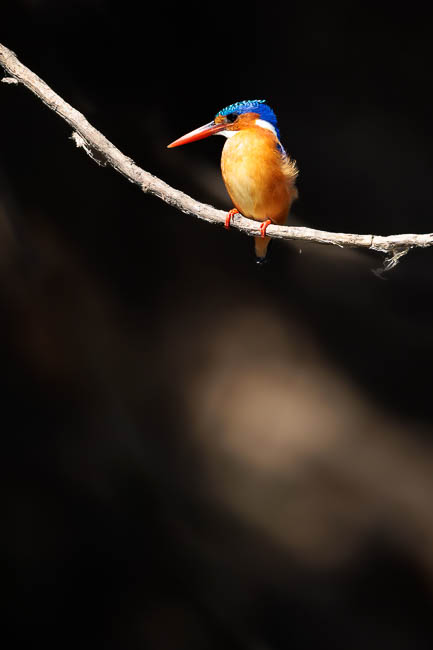
Even with high frame-rates, capturing this malachite kingfisher as it dropped into the water to catch fish eluded us!
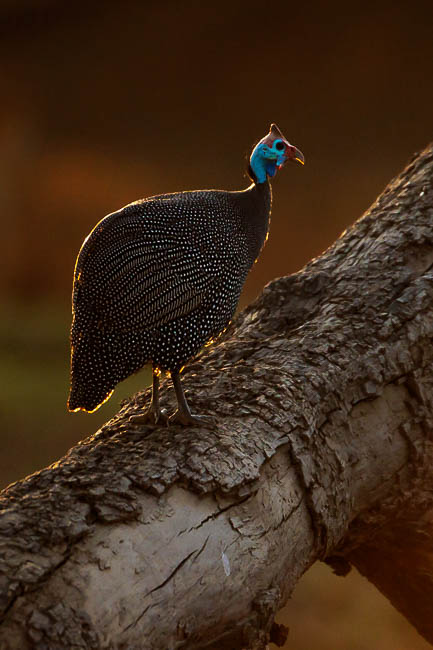
By choosing the right position from which to photograph this guinea-fowl we created a beautiful image of one of Luangwa’s most common residents.
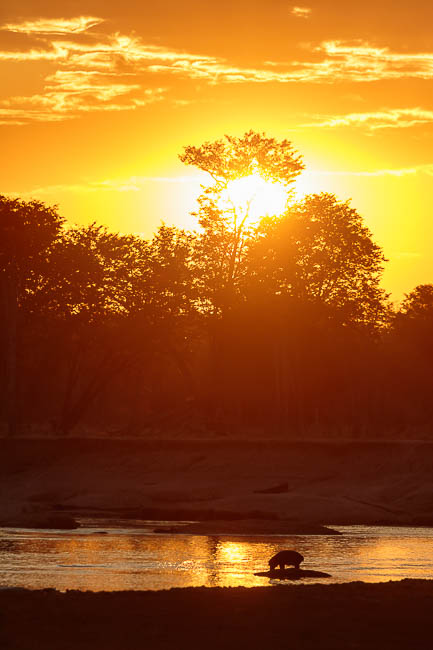
Shooting against the light challenges the camera and the photographer, but can create lovely results.
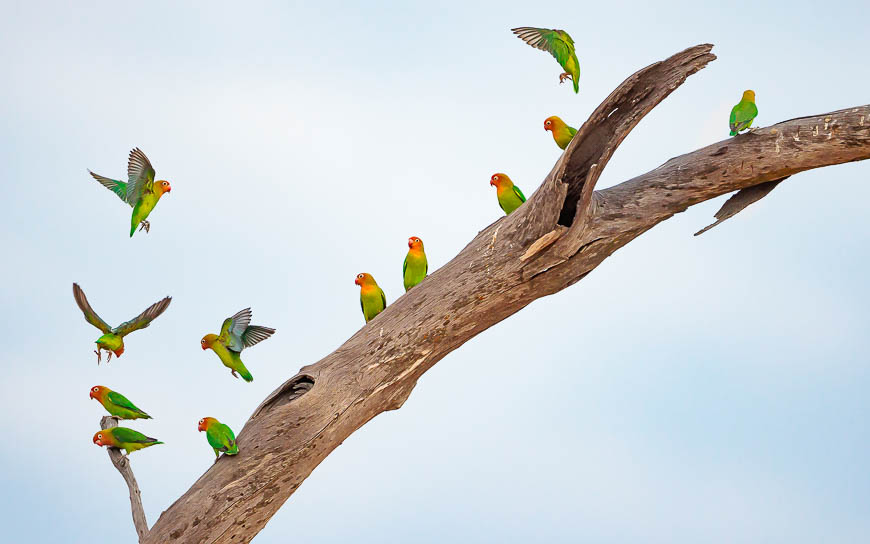
Waiting for the moment when several of these lovebirds left their perches turned a static and dull image into something more special.
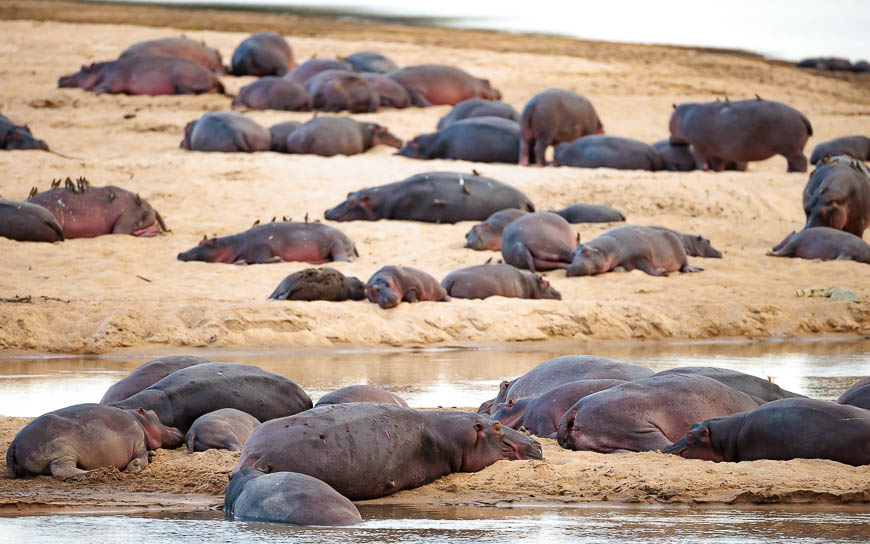
Cold mornings mean ‘beach time’ for the hippos!
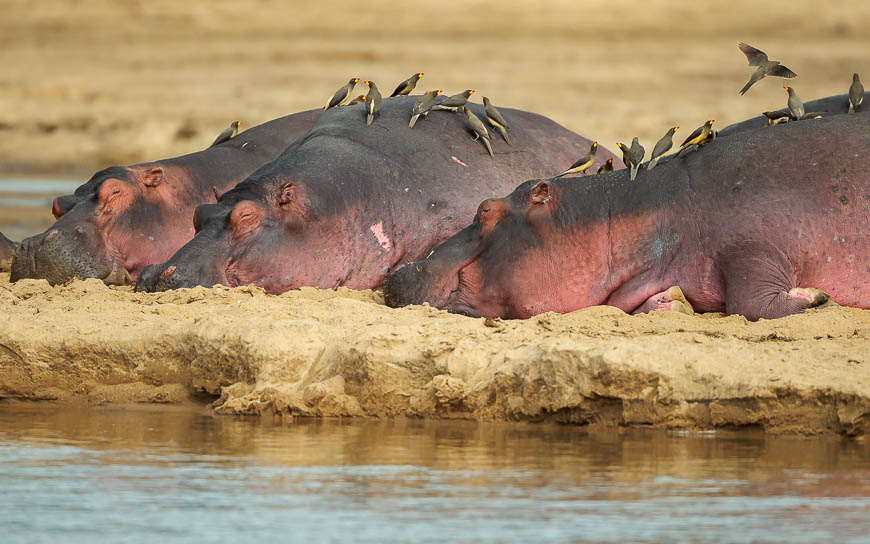
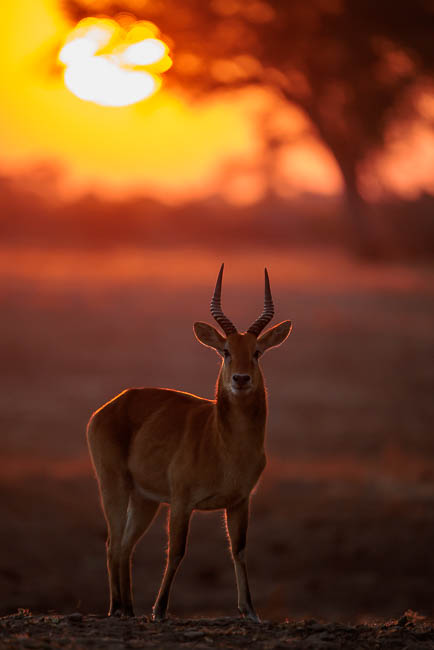
I always try to find a subject to photograph at sunrise…fluffy animals are best as the backlight illuminates their coats.
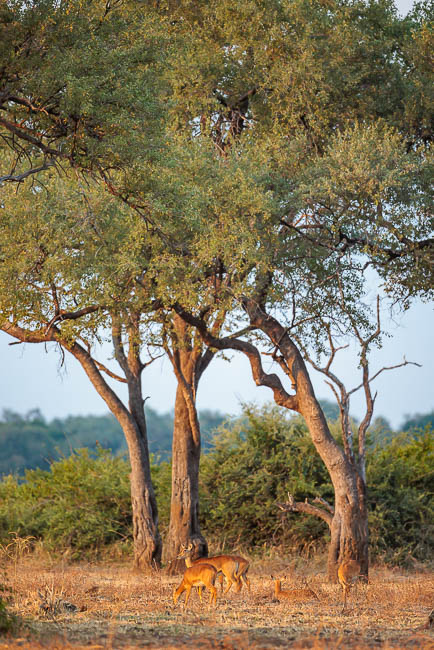
Rare late afternoon sunlight on this scene made the puku pop out.
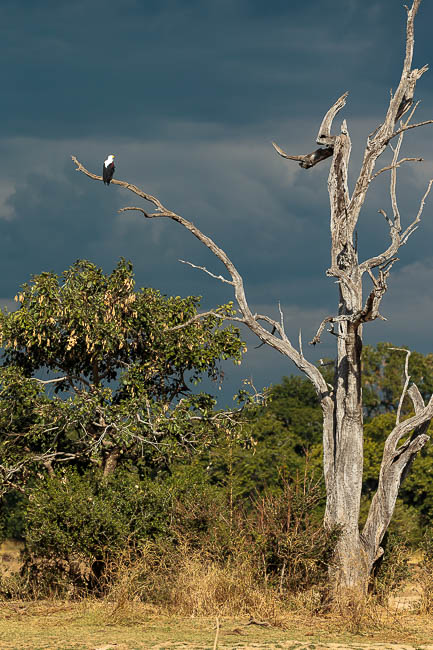
There was a little rain late on the afternoon of our last day; the steel-blue skies during the build up gave us a dramatic backdrop for both this fish eagle…..
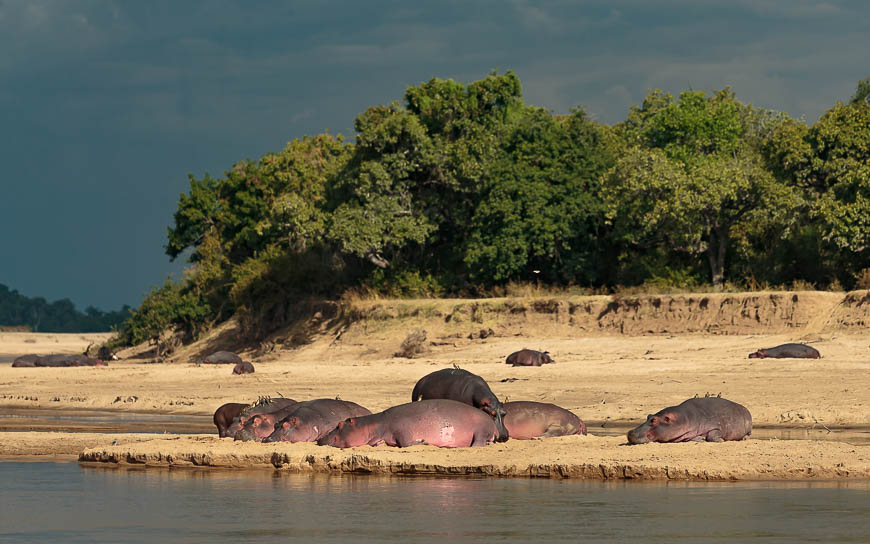
….and these hippos.
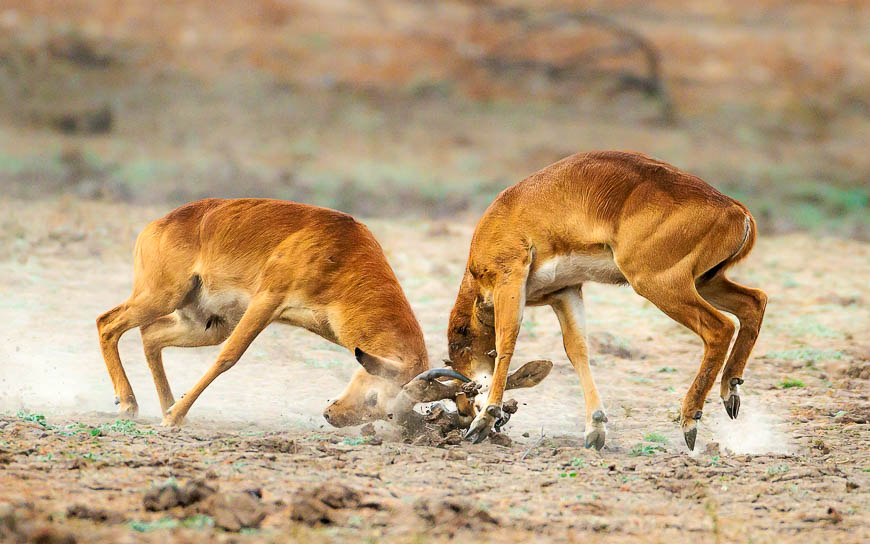
A passing leopard raised the adrenaline levels in these puku, stimulating a fight that lasted several minutes.
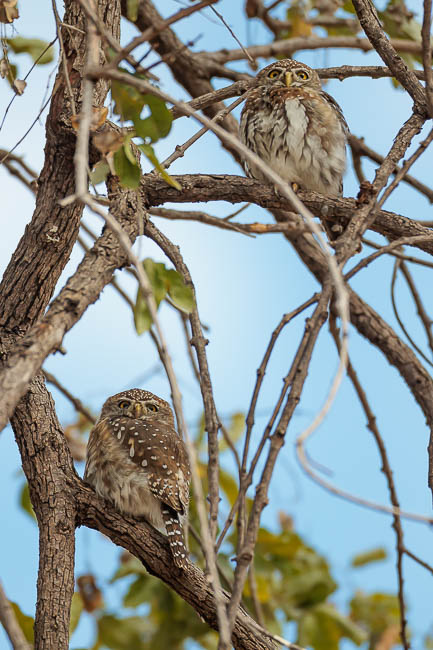
Sparrow warning calls led me to these two owlets resting high in a leadwood tree.
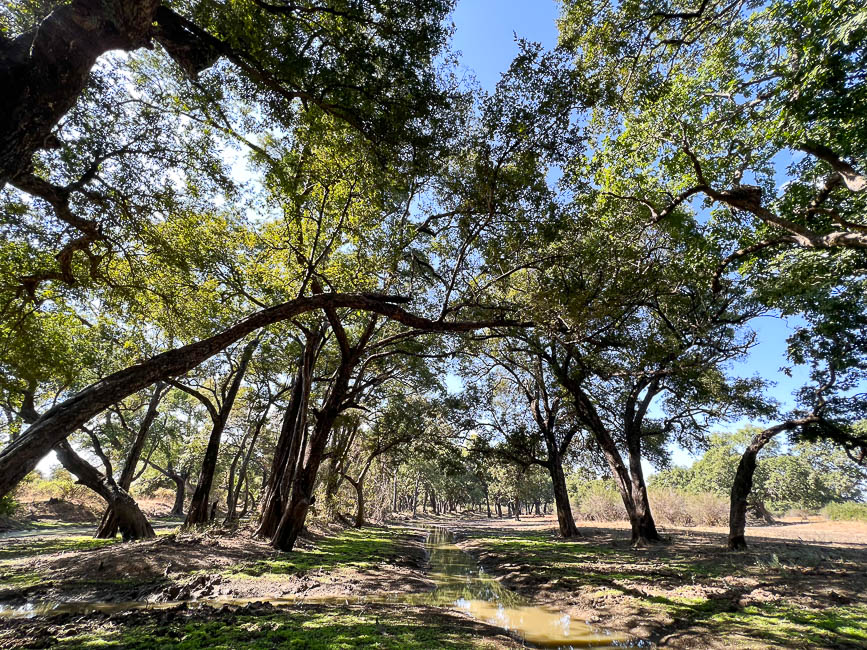
The ebony grove during one of our coffee breaks.
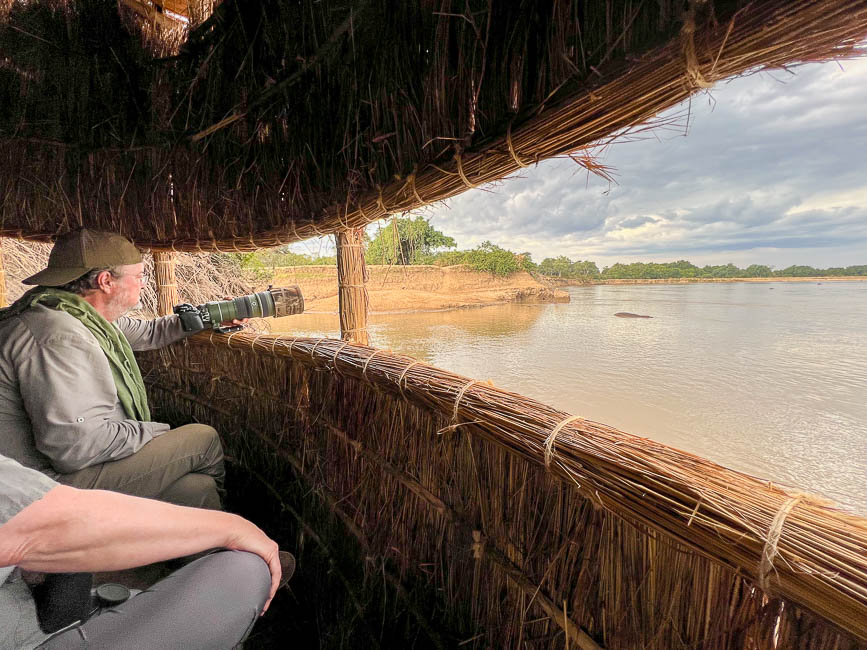
Paul sitting in the Kaingo hippo hide ready for the action. This hide is one of many that Shenton Safaris have set up for photographers.
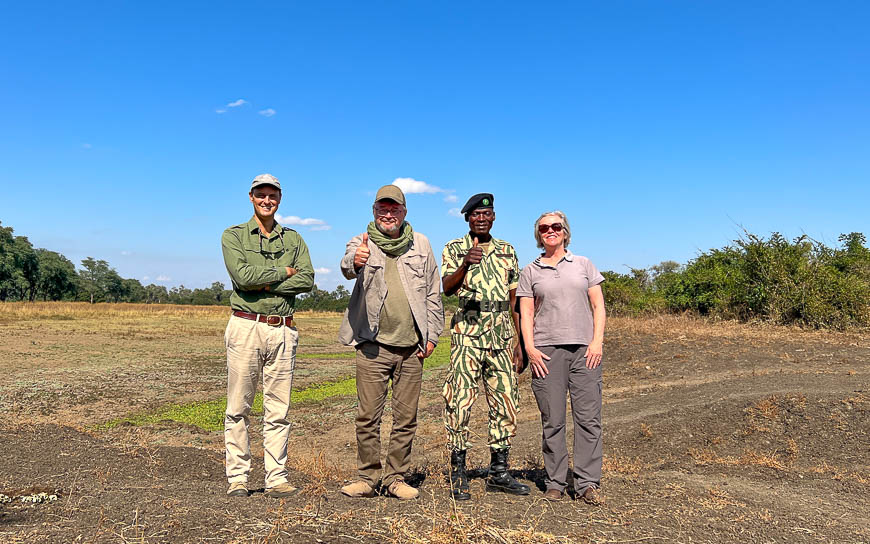
Coffee break on our final morning after a great trip!
I loved running this trip for Paul & Liz, spending extended time in one of the best areas of the Luangwa. Paul has already mentioned that he would like to return, and I already look forward to a future trip with them both! Thank you for reading to the end and please get in touch if you would like to know more about photo safaris in the Luangwa Valley.


